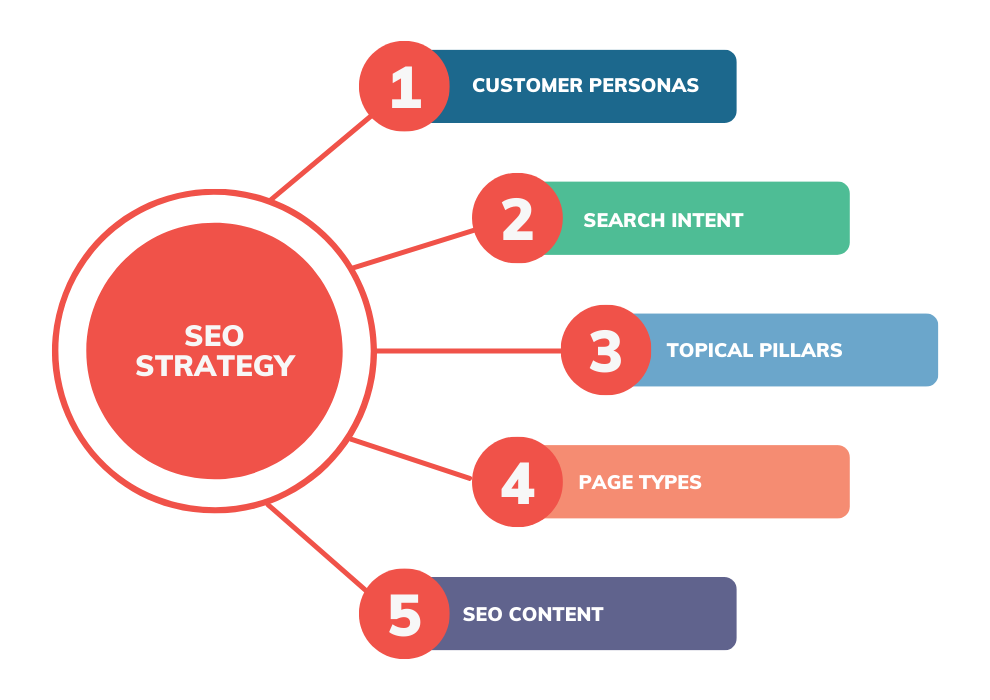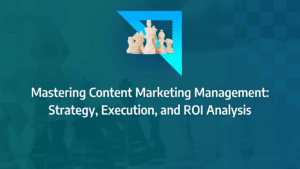Have you ever wondered which content marketing format will truly resonate with your audience and drive engagement? With so many options, from blogs to videos, infographics to podcasts, it’s easy to feel lost in the sea of possibilities. But what if you could unlock the secret to choosing the right format every time?
In this post, we’re going to delve into the diverse world of content marketing types and formats, offering you strategic insights and practical tips that will help you make the most out of your content strategy. Whether you’re looking to captivate your audience with engaging videos or establish thought leadership through well-crafted blogs, we’ve got you covered.
- Understanding Content Types: Learn about the different content marketing types and how each serves specific marketing objectives.
- Effective Content Formats: Discover the strengths of various content formats like blogs, videos, and infographics, and how they can enhance your marketing strategy.
- Strategic Content Application: Align your content types with your business goals to maximise audience engagement and achieve desired outcomes.
- Integration for Impact: Explore strategies for integrating multiple content types into a cohesive content strategy that delivers consistent brand messaging.
- Overcoming Challenges: Identify common challenges in content marketing and gain actionable solutions to navigate these hurdles effectively.
What are the benefits of incorporating diverse content types in marketing?
Content marketing provides several key benefits, including:
- Converting and Reaching New Prospects: Content marketing strategies are designed to attract and convert new leads, expanding your reach.
- Driving Measurable Results: Through precise metrics and analytics, content marketing allows you to measure the effectiveness of your campaigns.
- Enhancing Brand Trust with Cultivating Content: Consistently delivering valuable content helps build and sustain trust with your audience.
- Boosting Brand Loyalty: Creating content that resonates deeply with your target audience fosters long-term loyalty.
What Matters Most?
From our experience, integrating storytelling into your content strategy often leads to deeper audience engagement, creating emotional connections that drive loyalty. Clients frequently discover that having a clear content mission statement strengthens messaging and consistency across all channels, aligning their efforts with business goals. Additionally, leveraging data-driven strategies not only enhances content effectiveness but also aligns with audience needs, ultimately improving ROI.Get In Touch
10 Effective Types of Content Marketing for Enhancing Brand Awareness
Blog Posts Blogging is a swift and efficient way to build brand awareness and engage your target audience. Utilising tools such as WordPress, Buzzsumo, AirStory, and Google Docs, you can produce high-quality blog posts that significantly increase your organic traffic.
Infographics Infographics simplify the delivery of complex and detailed content to your audience. By using formats like bullet points, numbers, charts, and diagrams, infographics make your message clearer and more accessible.
Source: Venngage
Videos Videos are an excellent medium for presenting high-quality content in an engaging and visually appealing manner. Incorporating videos into your content marketing campaigns can help you capture and nurture leads at scale.
eBooks eBooks provide an in-depth form of content compared to blogs or infographics. They are instrumental in gaining and nurturing leads, as extensive content offers detailed insights into your products and services once downloaded by your audience.
Case Studies Case studies serve as effective content marketing formats by offering proof of your product and service efficacy. Including CTAs, customer quotes, or video testimonials, case studies enhance brand credibility and reassure your audience of your integrity.
Checklists Checklists break down complicated marketing processes into clear, actionable steps. This format is particularly helpful for generating leads by guiding customers through step-by-step procedures to achieve their goals.
Testimonials and Reviews Testimonials and reviews are powerful tools for boosting brand credibility and trust. They not only save time but also effectively capture more leads by showcasing authentic customer experiences.
Influencer Marketing Leveraging influencers to promote your products or services across social media platforms like Instagram, Snapchat, Facebook, or TikTok can significantly enhance lead conversion rates by making your brand relatable to a broader audience.
Guides and How-To Content Sharing industry expertise and how-to guides boosts brand engagement and trust. This type of content demonstrates your authority in your field and provides valuable insights to your audience.
Source: Mediafly
Memes Memes offer an entertaining and eye-catching content format that resonates quickly with your target audience. By promoting memes across various platforms such as email, social media (Facebook, Instagram, Twitter), and more, you can drive higher engagement with your products and services.
Real-World Examples of Effective Content Marketing
Accelerating your SEO initiatives, expanding your brand reach, and climbing the Google rankings can be significantly enhanced through blogging. Here are three exemplary companies that have harnessed blogging effectively:
- OptinMonster OptinMonster’s blog is a stellar example of creating engaging content formats to improve conversion rates and expand their email subscription list. By offering insightful tips, strategies, and guides, OptinMonster attracts organic traffic. Using terms like “guides” and “tips” effectively draws in visitors searching for practical advice, thereby enhancing their SEO efforts.
- Buffer Buffer stands out by managing four distinct blogs and consistently sharing guest posts on popular sites. Their primary blog, ‘Buffer Social,’ is highly shareable across various platforms, significantly boosting brand trust and capturing leads at scale. This strategy of diversifying content marketing formats and leveraging guest blogs helps Buffer reach a broader audience and strengthens their online presence.

Our Tactical Recommendations
We often find that creatively repurposing existing content can dramatically boost visibility and engagement without the need for constant new material. We recommend leveraging webinars as a powerful dual-purpose tool for both lead generation and valuable education, making it beneficial for audiences. Embracing live video typically cultivates authentic interactions and real-time engagement, fostering a loyal community around your brand.Get In Touch
Content Marketing Tactics
To maximise the impact of your content marketing strategies, consider the following tactics:
1. Leveraging Niche Platforms
Mainstream social media platforms like Facebook and Twitter often present challenges due to their saturated audiences. However, niche platforms cater to specific interests or communities, such as gamers, book lovers, or professional groups, offering a more focused and engaged audience. This targeted approach allows marketers to deliver precise messages to a receptive audience, thereby maximising marketing efficiency and building stronger customer relationships.
Case studies demonstrate that niche platforms boast higher engagement rates due to their specialised nature. By tapping into these communities, marketers can forge authentic connections with potential customers, utilising marketing resources more effectively. The close-knit nature of these platforms also fosters trust and loyalty, essential for converting engagement into tangible business outcomes.
2. Utilising User-Generated Content
User-Generated Content (UGC) is a powerful strategy that harnesses the creativity of your audience, turning them into active participants in your brand’s narrative. Hosting contests or offering incentives encourages your audience to produce content that showcases the real-life applications of your products. This approach not only builds a sense of community but also adds a layer of authenticity to your marketing efforts.
UGC enhances brand relatability as potential customers see real people using and enjoying your products. This authenticity boosts trust and appeal. Moreover, UGC serves as valuable feedback, providing insights into how your products are used and perceived, guiding future product development and content marketing strategies.
3. Podcasting as a Content Medium
Podcasts have surged in popularity, becoming a viable medium for content marketing. They offer a unique way to reach audiences through engaging auditory experiences. The key to a successful podcast lies in creating content that is both engaging and relevant to your target audience, ensuring it resonates and retains their interest.
Integrating podcasts with other content marketing formats, such as social media campaigns or blog posts, creates a dynamic and multi-dimensional content strategy. This integration broadens the reach of your content, providing audiences with various ways to interact with your brand. Featuring guest speakers or industry experts in your podcasts can further enhance credibility and depth, solidifying your position as a thought leader in your industry.





